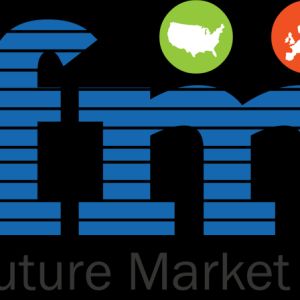Porphyria Treatment Market - Insights, Growth, Trends, Outlook, and Analysis, 20Posted by Pareesh on July 13th, 2018 Porphyria is an inherited rare disorder that affects the nervous system or skin and may cause abdominal pain. Cells of porphyria patients are unable to change body chemicals called porphyrins and its precursors into heme, the substance responsible for blood color. According to the National Institute of Diabetes and Digestive and Kidney Diseases (NIDDK), the exact rates of porphyria are unknown and vary globally. For instance, porphyria cutanea tarda is most common in the U.S., and variegate porphyria is frequent in South America. Some porphyrias such as erythropoietic protoporphyria, hepatoerythropoietic porphyria, and congenital erythropoietic porphyria occur when an individual receives two abnormal genes, one from each parent. The chances of an individual passing the abnormal gene or genes to the next generation depends on the type of porphyria. Acute porphyrias affects the nervous system and abdomen. Its attacks develop over hours or days and can last up to several weeks. Download PDF Brochure @ https://www.coherentmarketinsights.com/insight/request-pdf/1706 Porphyria Treatment Market Dynamics The most common tests used for porphyrias diagnosis are measurements of substances such as porphyrin precursors and porphyrins, in blood plasma, red blood cells, feces, and urine. Measuring enzymes in cells and mutations in DNA is useful for confirmation and family studies. Though, no cure is available for porphyria, there is treatment for each type of the disease. Treatment depends on the type and severity of the disorder and can involve treating with heme, giving medicines to relieve the symptoms, or drawing blood. Drugs like Thorazine, Chlorpromazine, Panhematin and Hemin can be used to treat symptoms of porphyria. Panhematin (Recordati Rare Diseases) is used for treating acute porphyrias. It is a lyophilized form of alkaline heme that has to be reconstructed immediately before administration and should be infused into a large peripheral vein. As per American Porphyria Foundation, Panhematin is the only commercially available heme therapy in the U.S. Porphyria Cutanea Tarda (PCT) is the most common and treatable form of porphyria and occurs, due to deficiency of the enzyme, uroporphyrinogen decarboxylase (UROD). PCT is a genetic disorder, however, some people have a genetic (autosomal dominant) deficiency of UROD that results in growth of PCT. Most people with the inherited enzyme deficiency remain latent and show no symptoms. Various environmental factors can impact the occurrence and severity of symptoms of porphyria. Smoking, alcohol, change in hormones levels, stress, certain drugs, and dieting or fasting can trigger the signs and symptoms of some forms of porphyrias. Moreover, exposure to sunlight severely damages the skin of people with cutaneous porphyrias. However, low incidence rates of porphyria can negatively impact the porphyria treatment market Porphyria treatment Market Regional Insights Regional segmentation of porphyria treatment market by Coherent Market Insights includes North America, Latin America, Europe, Asia Pacific, Middle East, and Africa. North America and Europe are expected to generate significant revenue share in the porphyria treatment market, owing to high presence of major industry players launching new products and conducting R&D for novel product development. For instance, in April 2018, Alnylam Pharmaceuticals, the leading RNAi therapeutics company, presented new results from the Phase 1 and Phase 1/2 open-label extension (OLE) studies of givosiran (RNAi therapeutic) targeting aminolevulinic acid synthase 1 (ALAS1) for the treatment of acute hepatic porphyrias. Porphyria Treatment Market Competitive Landscape Key players operating in the porphyria treatment market include ACON Laboratories, Inc., Bio-Rad Laboratories, Inc., Dahaner, Hoffmann-La Roche Ltd, Siemens AG, ARKRAY, Inc., and Sysmex Corporation. Industry players are working towards development of new treatments for the disease. Porphyria Treatment Market Taxonomy On the basis of drugs, the porphyria treatment market is segmented into: Thorazine, Chlorpromazine, Panhematin, Hemin, Others,. On the basis of end users, the porphyria treatment market is segmented into: Hospitals, Clinics, Research Centers,. On the basis of region, the porphyria treatment market is segmented into: North America, Latin America, Europe, Asia Pacific, Middle East, Africa,. About Coherent Market Insights: Coherent Market Insights is a prominent market research and consulting firm offering action-ready syndicated research reports, custom market analysis, consulting services, and competitive analysis through various recommendations related to emerging market trends, technologies, and potential absolute dollar opportunity. Contact Us: Mr. Shah Like it? Share it!More by this author |


